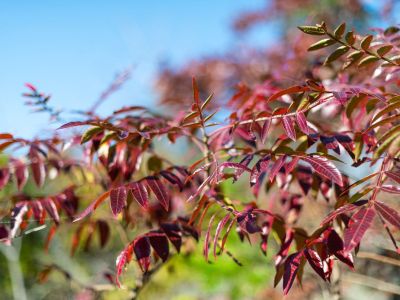Purple Ash Tree Facts
White ash trees (Fraxinus americana) are native to eastern North America. They are the tallest of native ash trees, growing up to 80 feet (24 m.) in the wild. While the trees have a pyramid form when young, mature trees have rounded canopies. The white ash cultivar, ‘Autumn Purple,’ stays somewhat shorter than the species tree. It is admired for its beautiful deep mahogany foliage in autumn. These autumn purple ash trees provide long lasting fall color. White ash trees are dioecious, with trees usually being either male or female. The ‘Autumn Purple’ cultivar, however, is a cloned male, so these trees will not produce fruit although you will find that these male trees do bear flowers. Their blossoms are green but discreet. Their other ornamental feature is gray bark. On mature purple ash trees, the bark sports diamond shaped ridging.
Growing an Ash Tree with Purple Leaves
If you are thinking of growing an ash tree with purple leaves, you’ll want to first read up on the insect pests that attack this tree. The emerald ash borer, native to Asia, is the most dangerous. It is considered a serious threat to all ash trees in this country. The emerald ash borer turned up in the United States in 2002 and spread fast. These bugs feed under the bark and kill an ash tree within five years. This borer bug is expected to continue spreading and it is extremely difficult to eradicate. This is the reason planting new ash trees is no longer recommended. Autumn Purple, the ash tree that turns purple, is also vulnerable to other insect pests. These can include the ash borer, lilac borer, carpenter worm, oyster shell scale, leaf miners, fall webworms, ash sawflies, and ash leaf curl aphid.
